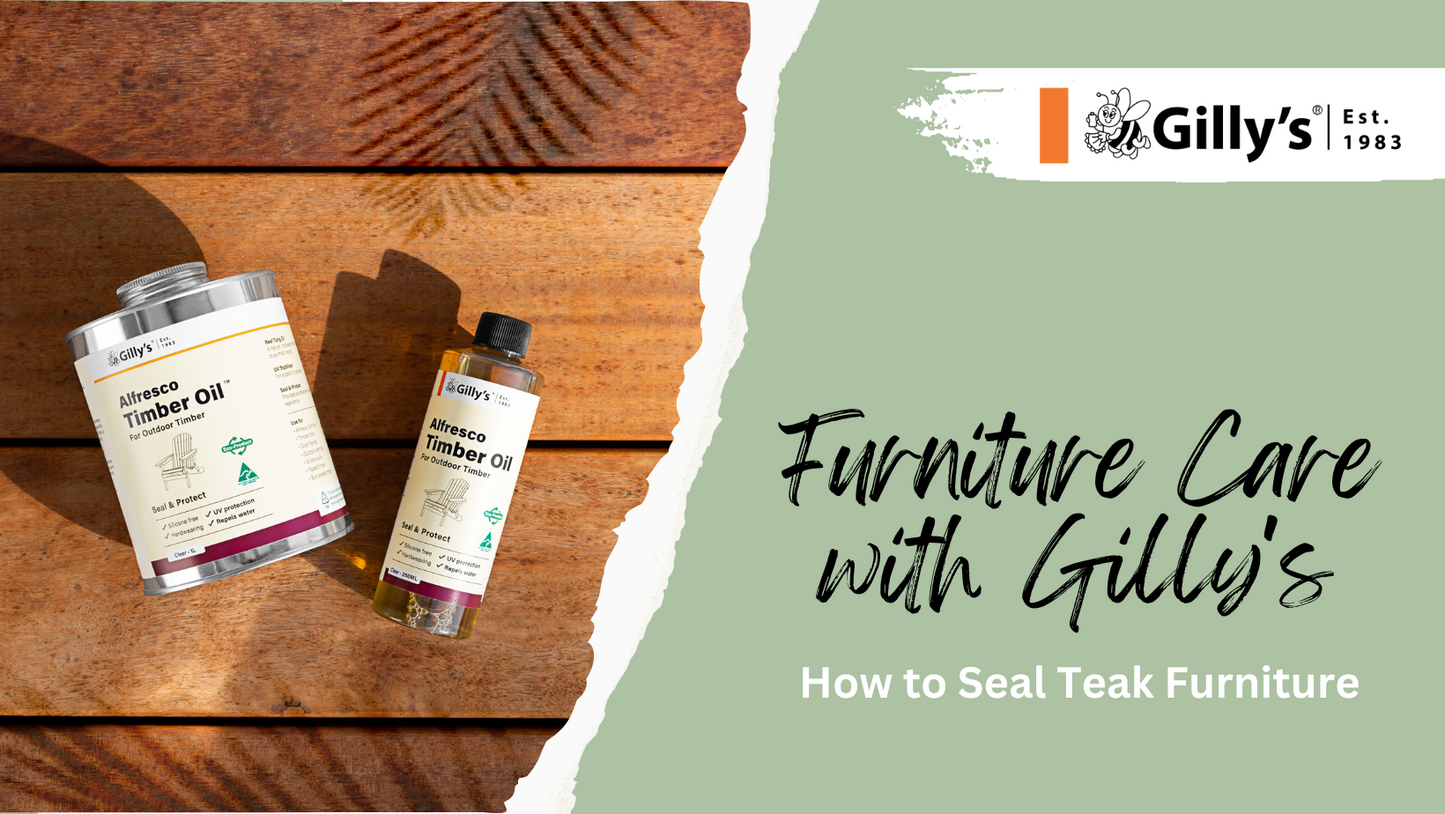
Picture courtesy of East West Design Fremantle
Preparing Outdoor Furniture for Summer
Teak is a very popular choice for outdoor/alfresco furniture and with good reason - it is hardwearing and stable.
A dense wood, teak is extremely stable and resistant to decay even when exposed to extreme weather conditions. It is not necessary to treat good quality teak. Left untreated, it will weather to a silver-grey colour over time. Even after many years, naturally weathered premium grade teak remains in excellent condition. For some people, this is an attractive feature.
Understanding the Greying Process
Timber’s colour is the presence of tannins (astringent chemical compounds), which leach out of the timber over time. Sunlight breaks down the tannins, which are then leached out and washed away by rain. This process normally takes around 12 months.
If you choose the leave the timber untreated in this way, it will become rougher initially (as the grain swells with the moisture, known as ‘grain lift’) but settles down over time to become smooth again. You can always give it a sanding with very fine (240 grit) sandpaper if this bothers you. Our blog on sandpaper may be of interest). Timber left untreated is porous and vulnerable to spills and stains (particularly oil) but the sun will bleach this out in time anyway.
Cleaning Greyed Teak

Always clean when the furniture is as wet as possible. Plastic scrubbers (such as Scotchbrite Heavy Duty Scouring Pads) are quite effective at removing spills and stains. Sandpaper can be used for particularly stubborn marks. If you scrub down beneath the grey to expose the original timber colour, don’t worry, the weather will soon bleach out the tannins and the patch will blend.
Mould may be present, which can be effectively cleaned naturally - we have found this site on cleaning with essential oils very useful.

Protecting from the Greying Process
However, many would like to retain as much of the original warm timber colour from new. There are quite a few products available on the market to treat and preserve teak. We recommend our Alfresco Timber Oil, which is formulated using naturally-derived tung oil. Extracted from the seeds of the tung nut, tung oil has been around for centuries. It has amazing water repellent qualities (you can read a little more about tung oil in our blog here). The Alfresco Timber Oil also contains a UV protectant, which helps to slow down the fading process.
Because we have endeavoured to keep the product as natural as possible (thus, avoiding added synthetic driers), the drying process for the tung oil is quite slow. It is important to be aware that the full ‘curing’ and therefore, water repellence of the tung oil may take up to 30 days (we usually recommend this to be on the safe side). That doesn’t mean you can’t use the furniture before then – once it is touch dry, light usage is fine. It is worth noting that this timeframe tends to be shorter in warmer/drier climates.
How to Apply Gilly’s Alfresco Timber Oil

- Rub or brush oil into the timber. Lighter coats are better.
- On first coat, let it sit for 5 minutes after applying. Wipe on more oil to areas that become dull, as the oil soaks in.
- After 5 more minutes, wipe off any excess oil with another clean cloth and rub it back vigorously.
- Follow this procedure for each coat. Note: Some people prefer to wet sand between coats, however this is generally only for timber that is quite porous.
- Apply 3 coats. Best to wait 24 hours between coats (curing time can be up to 30 days). Apply more coats if desired or necessary.
- Hang out any rags or soak in water, rather than leaving scrunched up, as there is the potential for combustion
Application on Brand New Furniture
Before applying any finish, leave the new furniture exposed to the elements for four to six weeks. It is important that it gets wet during this pre-weathering period. If it doesn’t rain or if your outdoor area is under cover, hose the furniture down thoroughly twice weekly to remove dust and natural oil. This will also open the grain (grain lift, mentioned earlier) and allow the finish to penetrate the pores of the timber more effectively.
Reversing the Greyed Effect
If you’ve changed your mind and would like to restore the original timber colour, you’ll need to remove the greyed layer. This can be taken off by wetting the timber thoroughly and scrubbing away the grey until the original timber colour can be seen beneath. You can also use sandpaper to help with this process. Once you have an even-coloured surface, go ahead and apply Gilly’s Alfresco Timber Oil to preserve the colour.



Hi, I recently purchased the alfresco oil to my new outdoor teak wood table & bench seats following the instructions on the bottle. I decided to search on line how many coats required having popped in 2 to discover your website says I needed to weather & wet my furniture which I haven’t done as it didn’t advise this on the bottle? Is this now an issue? Maybe a link to your website prior to application could be added to your labels?
Kind regards
Rebecca